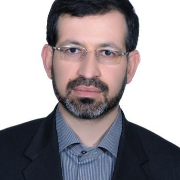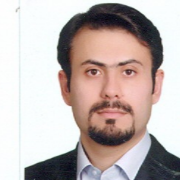1. Background
Happiness is considered as an important item in any community (1). This term refers to subjective well-being (2-5), which is experienced by individuals. Despite various definitions, happiness is defined as how much people like their life (6). A core element of this definition is subjective ‘evaluation’ or ‘liking’ of life, which is also referred to as ‘satisfaction’ with life (1).
Individuals spend a significant amount of time at work. Therefore, how they feel about their work can influence their life and well-being (7). On the other hand, being happy at the workplace is important as well. A comprehensive measure of happiness might include work engagement, job satisfaction, and affective organizational commitment (8). In order to be happy, individuals need to find themselves purposeful and meaningful at work and the organizations need to understand the effects of working conditions and workplace on individual happiness (9). Generally speaking, happy workplace activities might include happy body, happy heart, happy society, happy brain, happy money, happy relax, happy soul, and happy family (10).
Military personnel are at risk of burnout and two main etiologies are suggested in this regard. Firstly, military organizations are the most bureaucratic organizations as well as the most organized ones with a high degree of formality. As bureaucracy is based on a legitimate and formal system of authority with the least flexibility, it can lead to burnout by its nature. In addition, military duty is fraught with stressful experiences that might be associated with burnout (11). Hence, personnel of these organizations are vulnerable to burnout.
Another influential factor is the behavior of staff, who act as the face of the organization. Among several models, 5S is a model, which was introduced for enhancing the productivity, quality, and safety of the workplace. It is designed to prompt workplace effectiveness and has been used since three decades ago. Like its Japanese sources, the name of this model roots in a list of five Japanese words: Seiri (sort, clearing, and classify), Seiton (straighten, simplify, set in order, and configure), Seiso (sweep, shine, scrub, clean and check), Seiketsu (standardize, stabilize, conformity), and Shitsuke (sustain, self discipline, custom, and practice) (12). Generally, this model emphasizes on the visual harmony of the organization with the key massage that “Everything in its place and a place for everything” (13). This massage leads to continuous improvement of the workplace. Hiroyuki Hirano introduced his 5S system: Sort, set in order, shine, standardize, and sustain, which are designed to improve efficiency, strengthen maintenance, and provide continuous improvement in all aspects of a company’s operations (14). Today, this model is being applied to a wide variety of industries, including health care (15, 16), educational institution (13), and business (17).
Most of 5S studies showed the positive effects of this model on improving workplace effectiveness and productivity. Agheei and Aghaei believed that 5S is a model that can increase the motivation, organizational cooperation, productivity, safety, and quality. Also, it can help decrease the wastage. Therefore, it is effective in military organizations in general and police centers in particular (18). It was shown that using 5S can promote mental health and decrease job stress in municipality staff (19). Other studies showed that using 5S increased the good housekeeping score among operation rooms in Isfahan hospital (20) and logistic parts in a hospital in Tehran, Iran (21). Another study showed that 5S could decrease the costs of municipality (22). To the best of the author’s knowledge, no study has been conducted yet to evaluate the effects of the 5S model on happiness of police staff (23, 24).
Islamic Republic of Iran Police (Acronym; NAJA in Persian language) designed a model for improving the organizational productivity in 2012. The office of applied research of NAJA executed a project entitled ‘quality management of NAJA’ (Acronym; MACNA in Persian language). This model was designed to improve the working environment and pleasantness of the environment, uniformize the cycle of services in the law enforcement units at the fastest time and in accordance with the defined standards, improve behavior patterns of the employees, increase the satisfaction of the staff and the clients, and also implement the citizenship rights. These features are very similar to the 5S model and there was no difference between the two models except that this was a local model. The main goals of this model were to enhance good housekeeping, safety, productivity, and organizational culture by creating a positive work environment (25). Shiraz Metropolis Police executed this project in 2014 in its affiliated centers. The main objective of this study was to evaluate the effect of the MACNA implementation on the happiness of police staff.
2. Methods
This was a longitudinal study that evaluated the effect of MACNA on male police staff happiness. It was performed between November 2014 and November 2015 in affiliated Shiraz metropolis centers. Mean score of happiness was checked before initiation of the project as well as one year after. The study population included all staff, who worked in the headquarter and those sheriffs, who worked at the local offices. In general, this study covered four major groups of police staff, as explained below.
1- Executive group: Including information officer, officer, patrol officer, information assistant, bureau of investigation, colonel, drug supervisor, preventive patrol, magistrate, motorcycle patrol, commander, driver assistant and others.
2- Semi-executive group: Including judicial bureau, crime prevention deputy, armor-bearer, judicial officer, chief justice, officer of the day, law enforcement expert, prosecuting officer, arresting officer and others.
3- Support group: Operator, referral officer, administrative unit, system manager, equity receiver, consultant and others.
4- Conscript group: Officer of the guard and soldier.
Four independent variables were checked in 135 male subjects before study implementation. Also, these variables were checked in the relevant 115 male subjects afterwards. The questionnaire included two main parts: demographic characteristics and happiness scale. Demographic characteristics included age, education (high school diploma, bachelor’s degree, and higher education), work experiences, marital status, type of contract with police (officers, who worked as the mandatory military service, contractual short-term employment, and contractual permanent contract), and type of administration (executive, semi-executive, logistics, and offices).
The Oxford happiness questionnaire (OHQ) was derived from the Oxford happiness inventory (OHI), which was developed by Hills and Argyle in the 29-item (26) OHQ; the OHI reduced 29 items. Each one involves the selection of either of the four options that are different from each other. Happiness in this inventory includes a general feeling of psychological well-being. For example, “I am intensely interested in other people”, “I find beauty in some things” and some reversed questions such as “I don’t feel particularly pleased with the way I am” and “I don’t have fun with other people”. Each participant expressed a degree of agreement with the statement on a six-point Likert scale (1 = strongly disagree to 6 = strongly agree). This questionnaire was translated to Persian in Iran and has been used several times in other studies (27). In this study, Cronbach’s α reached 0.86, which indicates good internal consistency.
Random sampling was done before and after implementation of the MACNA. The process of this study started during November 2015 and pretest was taken from the participants. After the implementation of MACNA during November 2015, the questionnaire was completed again. During this period, NAJA promoted the environment of police offices based on its goals, which are mentioned above, such as improving the order, cleanliness, and waste elimination through the workplace organization. The SPSS version 19 was applied for data analysis. Paired t-test was used to compare the mean scores of happiness before and after the project. Also, independent sample t-test or one way analysis of variance (ANOVA) were used to compare the happiness score with demographic characteristics. Statistical significance level was set as 0.05.
3. Results
Overall, 135 individuals were evaluated before the implementation of the MACNA plan and 115 after the project. The mean age of the subjects was 35.69 ± 7.63 and the average work experience of the personnel was 15.13 ± 7.69 years. There was no significant difference between mean age and work experience in two groups (P > 0.05). Overall, 178 (79.8%) people were official long-term contractual personnel, 37 (16.6%) were short-term contractual, and only eight (3.6%) were mandatory military service officers. Furthermore, 211 (85.4%) were married, 32 (13.0%) were single, and four (1.6%) were divorced. There was no difference between the two groups regarding marital status (P > 0.05). Regarding the main reason for choosing to work in the police force, 130 people (52.0%) stated their personal interest, 91 (36.4%) financial needs, 18 (7.2%) more independence, and 11 (4.4%) stated that they had found a job with their field of study. In this regard, the two groups were similar (P > 0.05). Ninety people (37.5%) lived at their own house and 150 (62.5%) lived in rental properties.
Also, participants were asked about the frequency of familial reunion and recreation with them and the responses were as follows; 16 (6.8%) once per week, 40 (16.9%) once every two weeks, 24 (10.2%) once every three weeks, 147 (62.3%) monthly, and nine (3.8%) once every year. Table 1 shows the association between socio-environmental variables and happiness score.
| Independent Variable | Number | Mean ± SD | P-Value |
|---|---|---|---|
| Type of administration | 0.005 | ||
| Executive | 61 | 55.51 ± 20.14 | |
| Semi-executive | 50 | 50.24 ± 20.98 | |
| Support | 18 | 43.5 ± 14.06 | |
| Conscript | 10 | 33.4 ± 20.03 | |
| Education | 0.379 | ||
| High school diploma | 63 | 53.03 ± 21.77 | |
| Bachelor’s degree | 136 | 49.01 ± 20.42 | |
| Master and higher | 31 | 48.32 ± 15.55 | |
| Shift work | 0.692 | ||
| Day | 85 | 48.91 ± 20.36 | |
| Rotating shifts | 137 | 50.01 ± 19.95 | |
| Main reason to work in Police force | 0.02 | ||
| Interest | 126 | 53.17 ± 18.23 | |
| Financial needs | 74 | 48.31 ± 22.7 | |
| Independency | 18 | 40.11 ± 14.16 | |
| More credit | 10 | 57.4 ± 20.55 | |
| Marital status | 0.149 | ||
| Married | 205 | 50.86 ± 19.79 | |
| Single | 36 | 45.61 ± 21.73 | |
| Housing | 0.153 | ||
| Personal | 86 | 52.48 ± 21.93 | |
| Rental | 148 | 48.63 ± 18.45 | |
| Income | < 0.001 | ||
| Providing expenditures and saving | 39 | 59.9 ± 23.36 | |
| Providing expenditures | 72 | 53.28 ± 15.41 | |
| Providing expenditures and a little deficit | 81 | 45.79 ± 18.72 | |
| Financial problem | 50 | 43.32 ± 21.47 |
The Association Between Socio-Environmental Variables And Happiness
Table 1 indicated that there was no association between happiness and education, shift work, marital status, and housing. However, there was a significant association amongst the types of administration, the main reason to work at the Police force, and income with happiness. Regarding the types of administration, those who worked as executives had higher mean score and mandatory military service officers had lower mean scores of happiness (P = 0.005). Regarding the main reason to work at the police force, those who worked for more credit had higher mean score and those, who worked for independency had lower score of happiness (P = 0.02). Considering income, those who provided their expenditures and had savings had higher score and those, who had financial problems had lower scores of happiness (P < 0.001). The current results showed that the mean score of happiness before and after MACNA was 42.92 ± 16.71 and 58.41 ± 20.81, respectively, with significant change (P < 0.001) (Table 2).
| Variable | Number | Mean ± SD | P-Value |
|---|---|---|---|
| Happiness | < 0.0001 | ||
| Before MACNA | 131 | 42.92 ± 16.71 | |
| After MACNA | 113 | 58.41 ± 20.81 |
Happiness Mean Score Before and MACNA Implementation
4. Discussion
The study results showed that type of administration, reason to work in Police force and income were significantly associated with better happiness scores. In addition, the current results confirmed that MACNA plan increased the happiness score of Shiraz metropolis police staff. This program focused on improving order, cleanliness, and waste elimination through workplace organization. Results of this study are in line with several previous studies.
5S is a model that helped promote the motivation, organizational cooperation, productivity, safety, quality, and alleviate waste. It can be effective for military organizations, specifically police staff (18). Based on the fact that happiness increases staff performance, it can be concluded that MCNA were able to fulfill the 5S goals. On the other hand, a few studies showed the association between happiness and stress (28, 29). 5S can promote mental health and decrease job-related stress (19); thus, MACNA could be applied to manage job-related stress. However, more randomized controlled studies with larger populations are needed to evaluate MACNA efficacy.
Theoretically, MACNA roots in the 5S model and deals with cleanliness, hygiene, visual workplace, and good housekeeping. Therefore, these five key elements are sorts, set in order, cleanliness, standards, and sustainability. The use of 5S begun some decades ago in Japan as a means of immediate engaging frontline process teams in daily work. By applying this program, immediate incremental improvements were noticed. Regularly revisiting the 5S method maintained improvements in the long term. This model provides the foundation for all quality improvement programs that increase staff productivity and organize a strong corporate culture.
Herzberg's two-factor theory called motivation–hygiene theory (30, 31) explains the 5S model in the best way. Based on this theory, hygiene factors, such as pay, job security, social and work status, working conditions, fringe benefits, job policies, and relations with co-workers are considered as one aspect. Another aspect of job-related happiness is motivation factors, such as level of challenge, the work itself, responsibility, recognition, advancement, intrinsic interest, autonomy, and opportunities for motivating creativity (30, 32, 33). The 5S model stands on the first part of this theory. Based on Herzberg’s view, it could be concluded that the 5S model decreases dissatisfactions of staff with hygiene factors. Sort, set in order, cleanliness, standards, and sustainability are related to work condition and job policies that are the hygiene part of Herzberg’s theory. There are quite a few discussions about the association between this theory, 5S model, and happiness yet it was proposed that the theory can be used for new issues in the contemporary research on happiness, intrinsic motivation, and materialism (34).
Based on this theory, it can be said that working in any organization includes two main factors that can influence the motivation of staff. Firstly, there are conditional factors, which decrease dissatisfaction of employees (30). These factors are related to the findings of this study and showed that MACNA improved the workplace environment through developing the organizational conditions.
4.1. Conclusion
This study showed that MACNA improved the happiness mean score among police forces in Shiraz metropolis. It is notable that cleanliness of the work environment has positive effects on the staff. In this study, the researchers found an association between 5S model and Herzberg’s theory about motivation. Besides, it was proposed that this theory can be applied in work environment evaluations via the 5S model.


